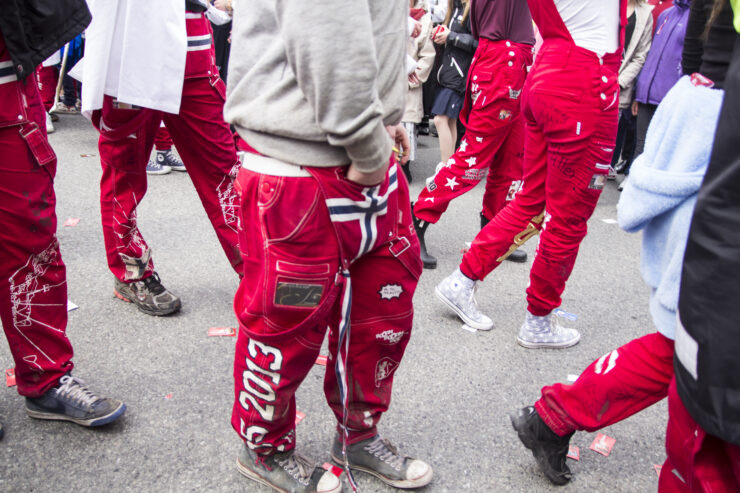
Recent years have shown an upsurge in cocaine use among Norwegian adolescents. Once associated with the financial elite in popular culture, cocaine is now a common party ingredient in some youth milieus. Cocaine use may lead to a wide range of health problems. It is also one of the substances with the highest potential for misuse and addiction. The development is thus worrying.
In Oslo, the reported rate of past-year cocaine use doubled from 2021 to 2023, from four to eight percent (Bakken, 2023). Isolated, these are not particularly alarming numbers. However, among older, heavy-drinking boys, the story is different. Seventeen percent of boys in the final year of senior high school report past-year cocaine use. The number for boys who have been drunk more than 10 times in the past year is 30 percent. That is one in three.
Why is this happening? A public debate has problematized the role of “russetid” – the Norwegian senior high school graduation celebration. The celebration consists of a month-long party where students ride around in refurbished old buses with huge sound and lighting systems. The financial costs may exceed €20,000 for the most dedicated participants. For some, the planning and social organization of the party start at the beginning of senior high school, shaping their entire high school experience. However, the social variation in the degree of participation is huge, both individually and between schools.
In a recent study, we examined the role of this school-based party culture in facilitating cocaine use among senior high school students in Oslo, Norway (Frøyland et al., 2025). In accordance with our expectations, we found significant variation between Oslo schools in the levels of cocaine use among the students. Approximately 10 percent of the variation in cocaine use stems from which school the adolescents attend. About half of this variance is explained by school-level variation in adherence to the high school graduation celebration culture. Nevertheless, 90 percent of the variation in cocaine use was associated with individual-level factors, such as being an older, heavy-drinking boy, as well as other forms of antisocial behavior and depressive symptoms.
So, where do we go from here? The individual-level variation in cocaine use points to these factors as important for developing preventive efforts. But remember that some of the individual-level factors single out specific at-risk groups: boys in wet party cultures. Adding the importance of school-level variation in party culture to this mix suggests that prevention work addressing these cultures may be of vital importance. This debate has also surfaced in the Norwegian public, with strong voices suggesting a need to change the culture surrounding the senior high school celebration. Our findings indicate that such measures may also be an effective approach for mitigating adolescent cocaine use.
Bakken, A. (2023). Ung i Oslo 2023. Ungdomsskolen og videregående skole [Young in Oslo 2023]. Junior and senior high school]. NOVA Rapport 6/23. OsloMet. https://hdl.handle.net/11250/3065089
Frøyland, L.R., Pedersen, W., Enstad, F., & von Soest, T. (2025). School party culture as a driver of cocaine use among Norwegian adolescents: A cross-classified multilevel analysis. Drug and Alcohol Dependence. https://doi.org/10.1016/j.drugalcdep.2025.112627
About the author
Lars Roar Frøyland, Ph.D., is a senior researcher in the Section for Youth Research at NOVA – Norwegian Social Research, OsloMet – Oslo Metropolitan University, Norway. His primary research interests encompass various aspects of youth lives, including sexuality, violence and abuse, substance use, crime, and other forms of problematic behavior.

Profile page: https://www.oslomet.no/en/about/employee/lrfroy/
